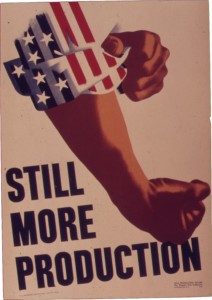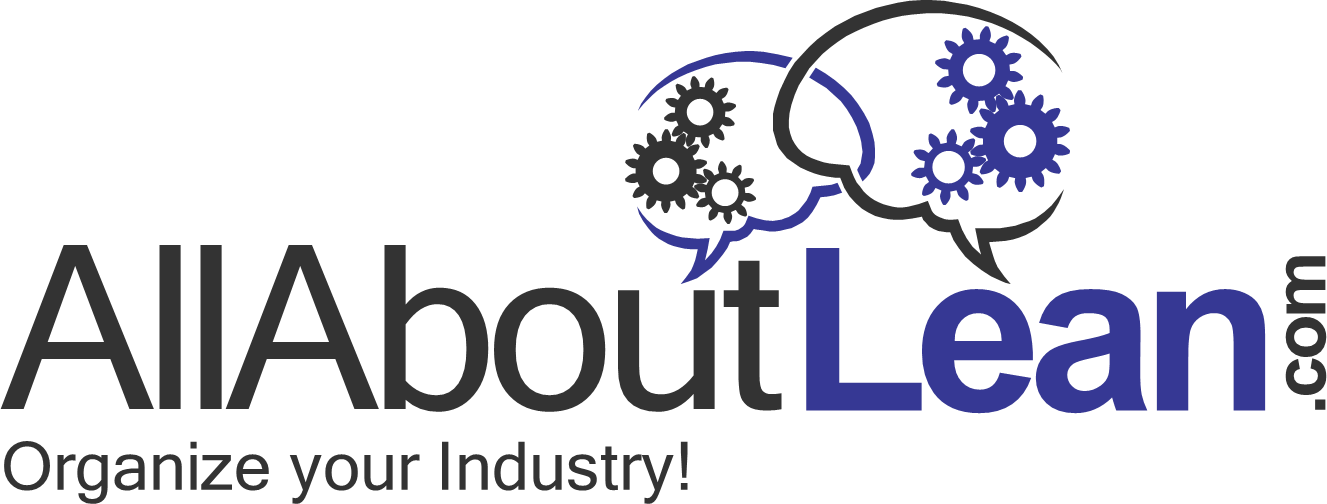 When we are talking about lean manufacturing, we often focus on the tools like kanban, 5S, SMED, and many more. Sometimes, but harder to grasp, is the underlying culture and philosophy of continuous improvement and PDCA. Part of this culture is what you could call the soft power of the Toyota Production System. This is a form of decision making in contrast with the “hard power” more common in Western companies. Let’s have a look:
When we are talking about lean manufacturing, we often focus on the tools like kanban, 5S, SMED, and many more. Sometimes, but harder to grasp, is the underlying culture and philosophy of continuous improvement and PDCA. Part of this culture is what you could call the soft power of the Toyota Production System. This is a form of decision making in contrast with the “hard power” more common in Western companies. Let’s have a look:
Leadership
Training Within Industry—Second-Line Supervisor Job Instructions
 Training Within Industry and its modules Job Instructions, Job Relations, and Job Methods are well known. But (thanks to Mark Warren) I just recently learned about another module: Job Instructions for Second-Line Supervisors (nowadays called managers). This is a hierarchy level higher, and the goal is to support and guide the shop floor supervisors on how to use job instructions. Let me dig deeper:
Training Within Industry and its modules Job Instructions, Job Relations, and Job Methods are well known. But (thanks to Mark Warren) I just recently learned about another module: Job Instructions for Second-Line Supervisors (nowadays called managers). This is a hierarchy level higher, and the goal is to support and guide the shop floor supervisors on how to use job instructions. Let me dig deeper:
The Danger of Management by Numbers
 One of the main hindrances for proper lean manufacturing is, in my view, management by numbers. While few managers actively do management by numbers, a quantitative measurement is still often preferred. The problem is if you can measure the cost but not the benefits of something…which often happens in lean manufacturing. Now let me rant a bit…
One of the main hindrances for proper lean manufacturing is, in my view, management by numbers. While few managers actively do management by numbers, a quantitative measurement is still often preferred. The problem is if you can measure the cost but not the benefits of something…which often happens in lean manufacturing. Now let me rant a bit…
Adding Another Axis to the Qualification Matrix—Products
 In my last two posts I talked about the qualification matrix, where you match the skills of your people to the skills needed for your business. This can be expanded with another axis, as for example the skills needed for certain products. This connects your people to your products through skills. It is also more useful for products where a single person assembles an entire product.
In my last two posts I talked about the qualification matrix, where you match the skills of your people to the skills needed for your business. This can be expanded with another axis, as for example the skills needed for certain products. This connects your people to your products through skills. It is also more useful for products where a single person assembles an entire product.
How to Use a Qualification Matrix
 In my last post, I described how to build a qualification matrix (also skill matrix, competence matrix, or Q-Matrix). In this post I will go into more detail on how to use a qualification matrix. By itself, the qualification matrix is a pretty simple but useful tool. This post will help you to get the most out of it.
In my last post, I described how to build a qualification matrix (also skill matrix, competence matrix, or Q-Matrix). In this post I will go into more detail on how to use a qualification matrix. By itself, the qualification matrix is a pretty simple but useful tool. This post will help you to get the most out of it.
This is NOT Lean: Lean Staffing
 In this post I would like to talk about another term that claims to be lean: lean staffing. It is NOT lean! It is an abomination. It is pretty much the opposite of what, in my opinion, lean stands for. It is a complete lack of respect for humanity. Let me explain you what it is, why it is terrible, and how to prevent this. Note that this post may include a rant here and there.
In this post I would like to talk about another term that claims to be lean: lean staffing. It is NOT lean! It is an abomination. It is pretty much the opposite of what, in my opinion, lean stands for. It is a complete lack of respect for humanity. Let me explain you what it is, why it is terrible, and how to prevent this. Note that this post may include a rant here and there.
How to Look Good at the Cost of Your Successor (Please Don’t!)–Part 3
 This is the last of my three posts on how to benefit at the cost of your successor. And again, please don’t. This is more of a warning on how to damage the plant for the benefit of the manager. And again, I hope rather than someone using this as a to-do list, someone uses it to see dangers. This last post looks at the worst “trick” of them all, burning the goodwill of your employees for a quick buck. It also looks at the one easiest to see, selling the plant and renting it back.
This is the last of my three posts on how to benefit at the cost of your successor. And again, please don’t. This is more of a warning on how to damage the plant for the benefit of the manager. And again, I hope rather than someone using this as a to-do list, someone uses it to see dangers. This last post looks at the worst “trick” of them all, burning the goodwill of your employees for a quick buck. It also looks at the one easiest to see, selling the plant and renting it back.
How to Look Good at the Cost of Your Successor (Please Don’t!)–Part 2
 This is the second post in this short three-post series on how to look good while driving the plant into the ground. Again, the following is intended more of a warning on how NOT to do it, even though I fear some may use it as a checklist. My hope is that even more see the signs and can stop it, or at least not reward the person in question for this type of skullduggery. I will also talk briefly about how to recognize and counteract this type of behavior for the long-term health and success of your plant.
This is the second post in this short three-post series on how to look good while driving the plant into the ground. Again, the following is intended more of a warning on how NOT to do it, even though I fear some may use it as a checklist. My hope is that even more see the signs and can stop it, or at least not reward the person in question for this type of skullduggery. I will also talk briefly about how to recognize and counteract this type of behavior for the long-term health and success of your plant.
